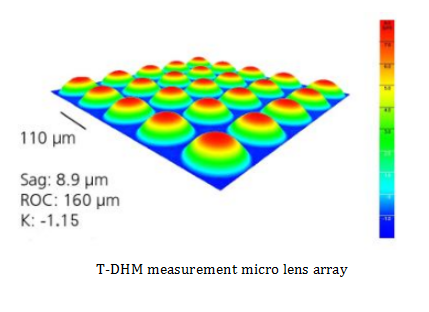{{i.title_en}}
Teaching Digital Holographic Microscopy T-DHM
MOQ: 1 PCS
Note: If you have any questions,please contact us
- 3D real-time dynamic measurement, which can dynamically track and analyze samples;
- Able to record and reproduce the three-dimensional information of the object, with high resolution, vertical resolution: 10nm;
- No need to scan, no need to mark, no damage to the sample object to be tested;
- Easy to operate, low requirements for the measurement environment, and more convenient for middle school teaching experiments.
- T-DHM

Suzhou Howard Electronic Technology Co., Ltd
Since:
2015
Product Description
Main Specifications
1. Test type: transmission type;
2. Test light source: semiconductor fiber laser (λ=635nm; W=5mW);
3. Microscope objective lens: 4X, 10X, 20X (optional);
4. Working distance: 0.5mm~16mm; (determined according to the objective lens magnification);
5. The moving range of the sample stage: 80mm×50mm;
6. Measuring depth: up to 100μm;
7. Axial resolution: 10 nm;
8. Repeatability measurement accuracy: 10nm;
9. Camera resolution: 1280×960 pixels;
10. Lateral resolution: up to 0.5μm;
11. Image acquisition rate: Maximum frame rate: 50fps (1280×960 pixels);
12. Phase reconstruction rate: 5 frames per second;
13. Data output: .bmp/.jpg format output;
14. Measurement software: with real-time calculation and data analysis functions;
15. Input voltage: 220VAC;
Teaching function and application
1. Micro-morphology test and corresponding dynamic characteristic analysis of middle school nano laboratory;
2. Suitable for observing the three-dimensional structure of biological cells, with high resolution, reaching the nanometer level;
3. The cell structure can be observed without cell markers, which is more conducive to the teaching experiments of the courses of middle school biology and other subjects;
4. No need to scan, the measurement process is real-time, and dynamic tracking analysis can be performed to ensure that the test results are more true and reliable;
5. The observation range is large, and the field of view is 2mm. It can be used with atomic force microscope and scanning tunneling microscope to achieve complementary functions, can better sample detection, and convenient teaching experiments;
6. It can be used in middle school physical and chemical biology laboratories, especially biological laboratories, and can conduct nano-maker and nano-STEAM teaching experiments.
Working principle
The key technology of the digital holographic microscope is: when measuring the microscopic appearance of an object, the optical microscopy technology is used to realize the magnification and imaging of the object, the holographic technology is used to obtain the object modulation hologram, and the digital holographic reconstruction technology is used to realize the reconstruction of the three-dimensional appearance of the object. Through the organic combination of software and hardware, real-time, high-resolution 3D images of the sample to be tested are presented, while data processing and size measurement are performed.
The hologram is obtained by superimposing the reference light and the object light to interfere. The semiconductor laser is divided into two parts, the light irradiated to the sample and the reference light. There are two systems in total: one is the reflection type in which the reflected light of the sample interferes with the reference light; the other is the transmitted light and the reference light. A projection type that interferes with reference light. A CCD camera is used to record the interference pattern generated by the test light and the reference light irradiated on the sample, and transmit it to the computer for real-time digital reconstruction.
The DHM software program can obtain multiple holograms and reconstruct the wavefront of the object under test within one second, providing the following information:
(1) The intensity image provides the same contrast as the traditional optical microscope;
(2) The phase image provides quantitative data at sub-wavelength scale for accurate and stable measurement.
In a reflective system, the phase displays the surface topography with nanometer-scale axial resolution. In the transmission system, the phase image shows the phase change caused by the different thickness and refractive index of the transparent sample.
The transmissive type is mainly used for transparent or semi-transparent samples, which can give information on the surface and topography of the sample, and can also reflect the internal structure and defects of the material.
Can be achieved with digital holographic microscope
(1) Observe and measure the surface morphology of the sample under nano-scale resolution;
(2) Real-time three-dimensional imaging;
(3) Fast full-field imaging. Can be widely used: MEMS measurement, life science (Life
Sciences) live cell analysis, real-time cell detection, microscopy, semiconductor, biochip and other industries.


 中文
中文 English
English Español
Español Français
Français